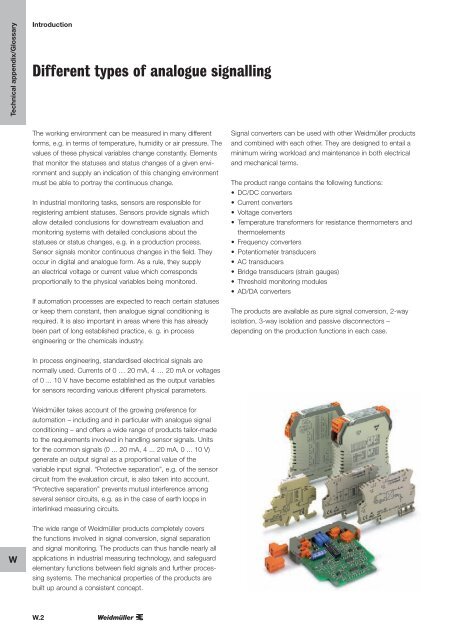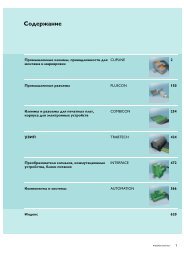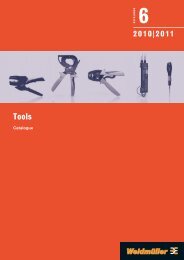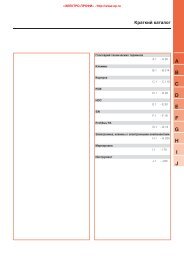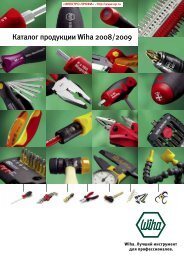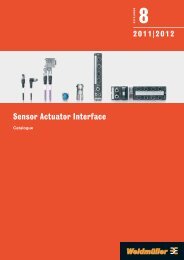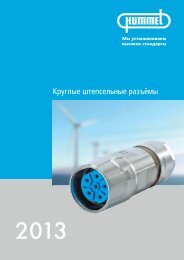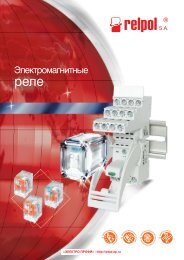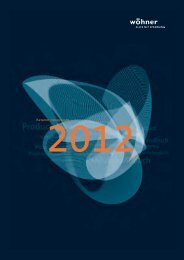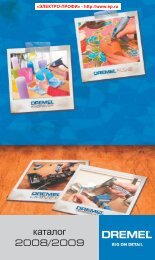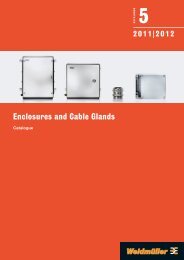ÐаÑалог Weidmuller: Electronics - Analogue Signal Conditioning
ÐаÑалог Weidmuller: Electronics - Analogue Signal Conditioning
ÐаÑалог Weidmuller: Electronics - Analogue Signal Conditioning
Create successful ePaper yourself
Turn your PDF publications into a flip-book with our unique Google optimized e-Paper software.
Technical appendix/Glossary<br />
Introduction<br />
Different types of analogue signalling<br />
The working environment can be measured in many different<br />
forms, e.g. in terms of temperature, humidity or air pressure. The<br />
values of these physical variables change constantly. Elements<br />
that monitor the statuses and status changes of a given environment<br />
and supply an indication of this changing environment<br />
must be able to portray the continuous change.<br />
In industrial monitoring tasks, sensors are responsible for<br />
registering ambient statuses. Sensors provide signals which<br />
allow detailed conclusions for downstream evaluation and<br />
monitoring systems with detailed conclusions about the<br />
statuses or status changes, e.g. in a production process.<br />
Sensor signals monitor continuous changes in the field. They<br />
occur in digital and analogue form. As a rule, they supply<br />
an electrical voltage or current value which corresponds<br />
proportionally to the physical variables being monitored.<br />
If automation processes are expected to reach certain statuses<br />
or keep them constant, then analogue signal conditioning is<br />
required. It is also important in areas where this has already<br />
been part of long established practice, e. g. in process<br />
engineering or the chemicals industry.<br />
<strong>Signal</strong> converters can be used with other Weidmüller products<br />
and combined with each other. They are designed to entail a<br />
minimum wiring workload and maintenance in both electrical<br />
and mechanical terms.<br />
The product range contains the following functions:<br />
• DC/DC converters<br />
• Current converters<br />
• Voltage converters<br />
• Temperature transformers for resistance thermometers and<br />
thermoelements<br />
• Frequency converters<br />
• Potentiometer transducers<br />
• AC transducers<br />
• Bridge transducers (strain gauges)<br />
• Threshold monitoring modules<br />
• AD/DA converters<br />
The products are available as pure signal conversion, 2-way<br />
isolation, 3-way isolation and passive disconnectors –<br />
depending on the production functions in each case.<br />
In process engineering, standardised electrical signals are<br />
normally used. Currents of 0 … 20 mA, 4 … 20 mA or voltages<br />
of 0 ... 10 V have become established as the output variables<br />
for sensors recording various different physical parameters.<br />
Weidmüller takes account of the growing preference for<br />
automation – including and in particular with analogue signal<br />
conditioning – and offers a wide range of products tailor-made<br />
to the requirements involved in handling sensor signals. Units<br />
for the common signals (0 ... 20 mA, 4 ... 20 mA, 0 ... 10 V)<br />
generate an output signal as a proportional value of the<br />
variable input signal. “Protective separation”, e.g. of the sensor<br />
circuit from the evaluation circuit, is also taken into account.<br />
“Protective separation” prevents mutual interference among<br />
several sensor circuits, e.g. as in the case of earth loops in<br />
interlinked measuring circuits.<br />
W<br />
The wide range of Weidmüller products completely covers<br />
the functions involved in signal conversion, signal separation<br />
and signal monitoring. The products can thus handle nearly all<br />
applications in industrial measuring technology, and safeguard<br />
elementary functions between field signals and further processing<br />
systems. The mechanical properties of the products are<br />
built up around a consistent concept.<br />
W.2


